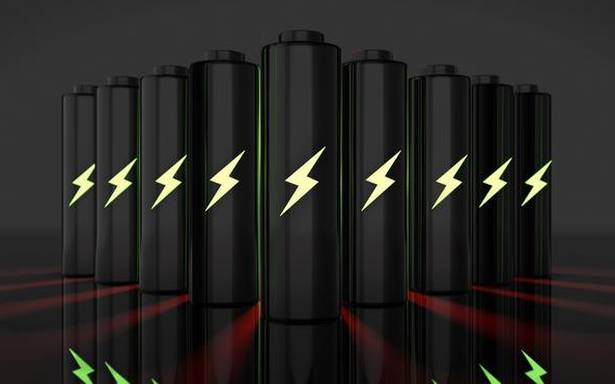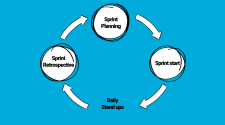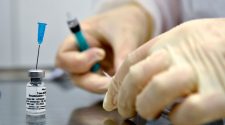The story so far: The 2019 Nobel Prize for Chemistry was awarded to John B. Goodenough, M. Stanley Whittingham and Akira Yoshino for working towards the development of practical lithium-ion batteries. These batteries are the edifice of the wireless technology revolution that made possible portable compact disc players, digital wrist watches, laptops and the mobile phones of today. It is also seen as important to a fossil-free future of electric cars that governments envisage to address climate change. Stanley Whittingham, a chemist at the University of Binghampton, State University New York, was at oil giant Exxon when he contributed to the development of the lithium-ion battery. Goodenough, who served in the United States Army in World War II before studying material science and engineering, became, at 97, the oldest Nobel Laureate. Yoshino, a professor at Meijo University, Japan was at the Asahi Kasei Corporation, one of the biggest chemical and material-sciences companies in Japan.
Why are lithium-ion batteries important?
By the 1960s petrol-driven cars had proliferated around the world. However, realisation dawned that the burning of this fossil fuel was harmful to the environment and, along with coal, responsible for the smog enveloping major cities. Also, fossil fuel was limited and research was launched to develop alternate fuel sources. Since the early 19th century, chemical batteries have been around. They consist of two electrodes between which electrons flow and generate a current. The challenge of such batteries is to choose appropriate electrodes and electrolyte, which mediates the current, and generate sufficient current safely at room temperature without occupying too much space.
Lead acid batteries — still used in cars to start engines and power headlights and power windows — are too bulky to practically function as car engines. Exxon, which was worried about depleting oil stocks, commissioned top researchers to find alternatives to fossil fuels.
One of them, Whittingham, studied solid materials whose atoms had spaces between them. Fitting positively charged ions in them — a process called intercalation — changed their properties and Whittingham found that potassium ions when intercalated in titanium made for an extremely energy-dense material. Lithium is also a light element and useful as an electrode, he found. In a battery, electrons should flow from the negative electrode — the anode — to the positive one — the cathode. Therefore, the anode should contain a material that easily gives up its electrons and lithium releases electrons willingly. This made for an ideal battery.
Was Whittingham’s battery a success?
Exxon was impressed with the product and decided to go ahead with commercially manufacturing the battery. However, subsequent tests revealed problems. As the new lithium battery was repeatedly charged, thin slivers of lithium grew from the lithium electrode. When they reached the other electrode, or the cathode, the battery short-circuited which could lead to an explosion. To make the battery safer, aluminium was added to the metallic lithium electrode and the electrolyte between the electrodes was changed. The batteries thus made were small and the next step was to make them big enough to be used in cars. However, the price of oil nose-dived in the early 1980s and Exxon needed to make cutbacks and development work was discontinued.
What were the contributions of Goodenough and Yoshino?
Goodenough had moved to Oxford University as a professor of inorganic chemistry and he set to work on improving Whittingham’s battery. He eventually found that the cathode could have a higher potential if it was built using a metal oxide instead of a metal sulphide. The challenge for Goodenough and his colleagues was to find a metal oxide that produced a high voltage when it intercalated lithium ions, but which did not collapse when the ions were removed. Eventually they chanced upon a battery with lithium cobalt oxide in the cathode, which was almost twice as powerful as Whittingham’s battery.
Goodenough’s major insight was that batteries did not have to be manufactured in their charged state, as had been done previously. Instead, they could be charged afterwards.
In 1980, a new energy-dense cathode material was available which, despite its low weight, resulted in powerful, high-capacity batteries. This, however, did not lead to an automobile revolution but triggered a wireless-electronics revolution.
This was when Yoshino came into the picture. Consumer electronics companies in Japan were looking for light, rechargeable batteries that could power video cameras, cordless telephones and computers. Yoshino, who was working at Asahi Kasei Corporation, used Goodenough’s lithium-cobalt design as a working template and tried various carbon-based materials as the anode.
Researchers had previously shown that lithium ions could be intercalated in the molecular layers in graphite, but the graphite was broken down by the battery’s electrolyte. Yoshino used petroleum coke, a by-product of the oil industry, and when he charged the petroleum coke with electrons, the lithium ions were drawn into the material. When he turned on the battery, the electrons and lithium ions flowed towards the cobalt oxide in the cathode. Though the voltage generated in Yoshino’s battery was similar to Goodenough’s battery at 4 volts, it was a stable battery — it had a long life and could be charged several times before its performance deteriorated. Moreover, the battery designed eschewed pure lithium which is extremely volatile and explodes on contact with air and water. The lithium cobalt design was safe and could be manufactured in a variety of sizes and conditions. There have been subsequent improvements to this design too and that’s what made it amenable to smart phones and other electronic devices that require rechargeable batteries.



















